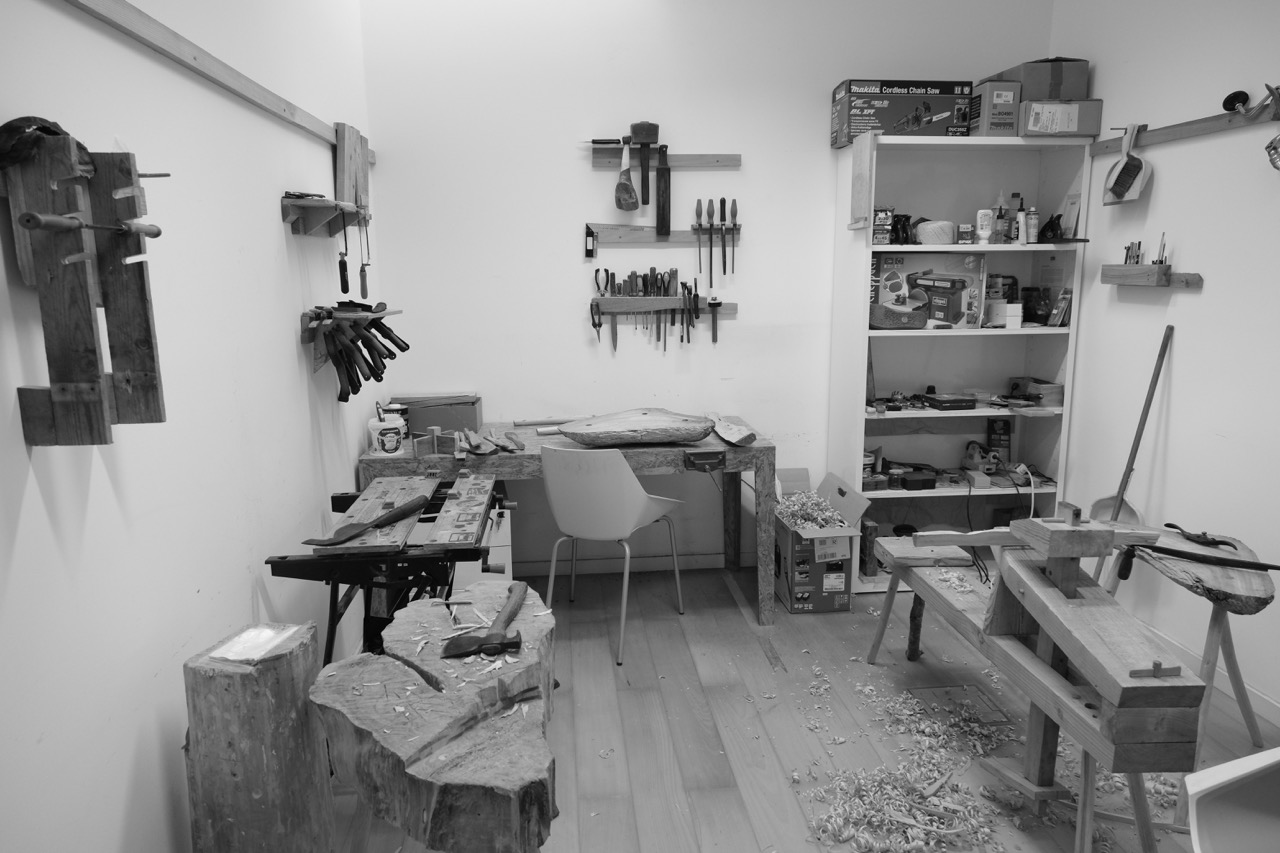In some ways it isn’t fair to class the Transylvanian woodshaper Zsombi as part of the new wave on the island. He arrived over a decade ago, before São Miguel had been discovered by more than the odd German bird-watching trip and is now married into an Azorean family. He and his wife have just welcomed a baby, half-Transylvanian and half-Azorean, who could possibly be the first ever of this mixed nationality. The work he does is similarly both new and very old at once. He is a wood-shaper fashioning the kind of utensils which have been used here, and in Transylvania, for centuries, but with an important and up-to-date twist. Almost all Zsombi’s products are made from driftwood which he finds washed up on the beaches around the island. Not only is this very much in tune with our contemporary need to be more sustainable but, as Zsombi argues very convincingly, if these pieces of wood can stand the force of the ocean, they are sure to stand the heat in your kitchen.
Interviewer: Thanks for agreeing to this interview Zsombi. Please introduce yourself!
Zsombi: My name is Zsombi. I’m from Transylvania and I do woodworking, woodcarving and furniture design, mostly out of driftwood.
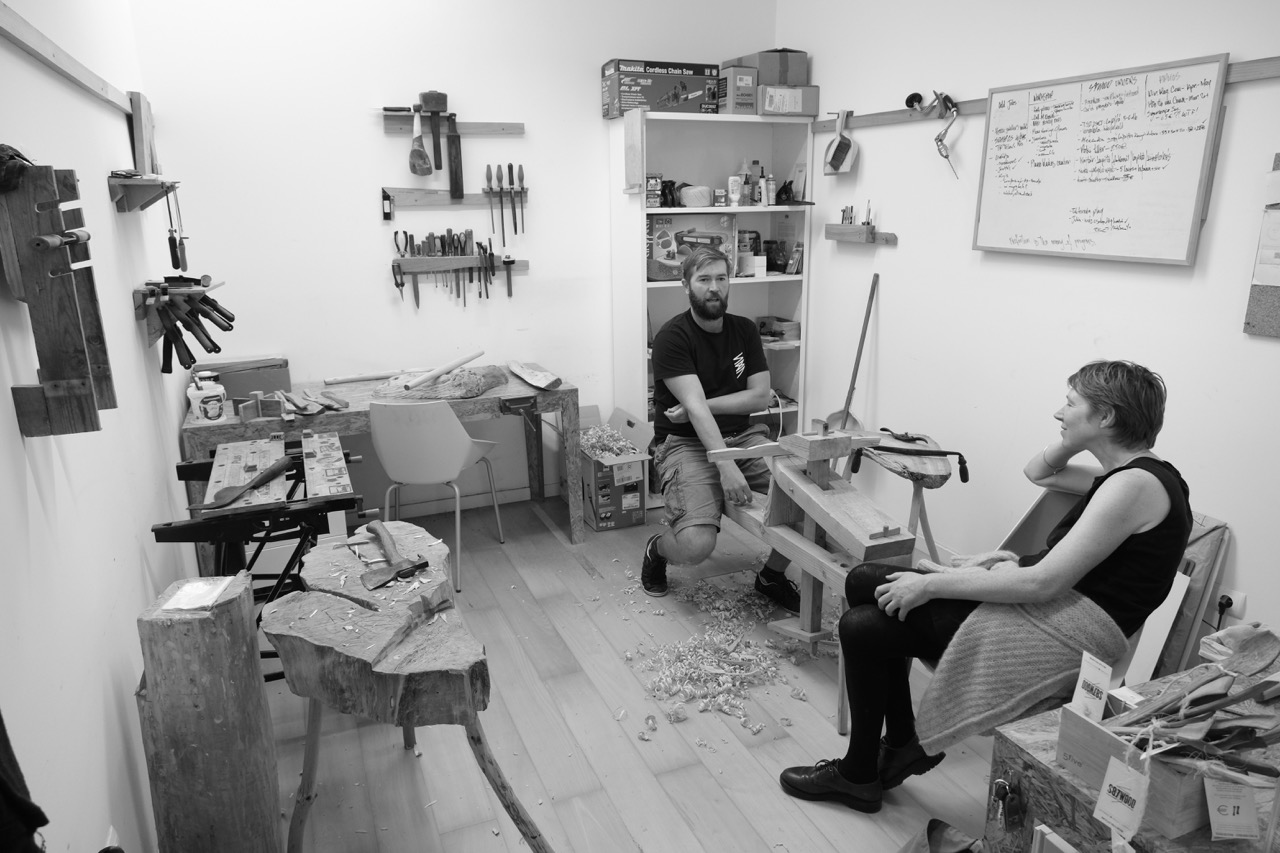
Interviewer: Can you tell me how you arrived in the Azores?
Zsombi: In 2013 I applied for a European Union programme called Eurodyssey, which is like Erasmus for grown-ups, for people who have already graduated. I was looking for the furthest place possible from where I was so I could go and see what the world was like. Somewhere very, very different and very far away. It was a six-month programme and then I extended my stay a little bit. I found my partner and now we have a kid and life is picking up speed.
Interviewer: This is your home.
Zsombi: I must say that it is. I go home every year and spend a month there but practically I live here.
Interviewer: Can you talk a little a bit about when you first got here. There is a lot of newcomers here now but when you first arrived there wasn’t. What was it like to be a newcomer ten years ago?
Zsombi: The absolute best and coolest thing ever. Tourism is a very recent thing here, mass tourism only started in 2014. Tourism before that was basically Germans and Scandinavians coming for hikes and birdwatching or Americans and Canadians visiting their relatives. So, tourism was practically non-existent. You come here as a foreigner, and you feel like an alien in the cultural sense. You are just floating about, a complete observer. Nobody knew me and I loved that.
Interviewer: I’m sure your reception was very friendly.
Zsombi: Sure, of course. Very few foreigners came here compared to now and people would ask where I was from and when I would say Transylvania, people were shocked. If I had a euro for every time someone had asked me if I knew Dracula, I would have a lot of euros. It was amazing. They were very curious, very friendly, not that they are not now, but my experience was very good. I spoke very little Portuguese and it was a very sharp learning curve at the beginning. Thankfully I have a knack for languages and I picked it up in quite a short space of time.
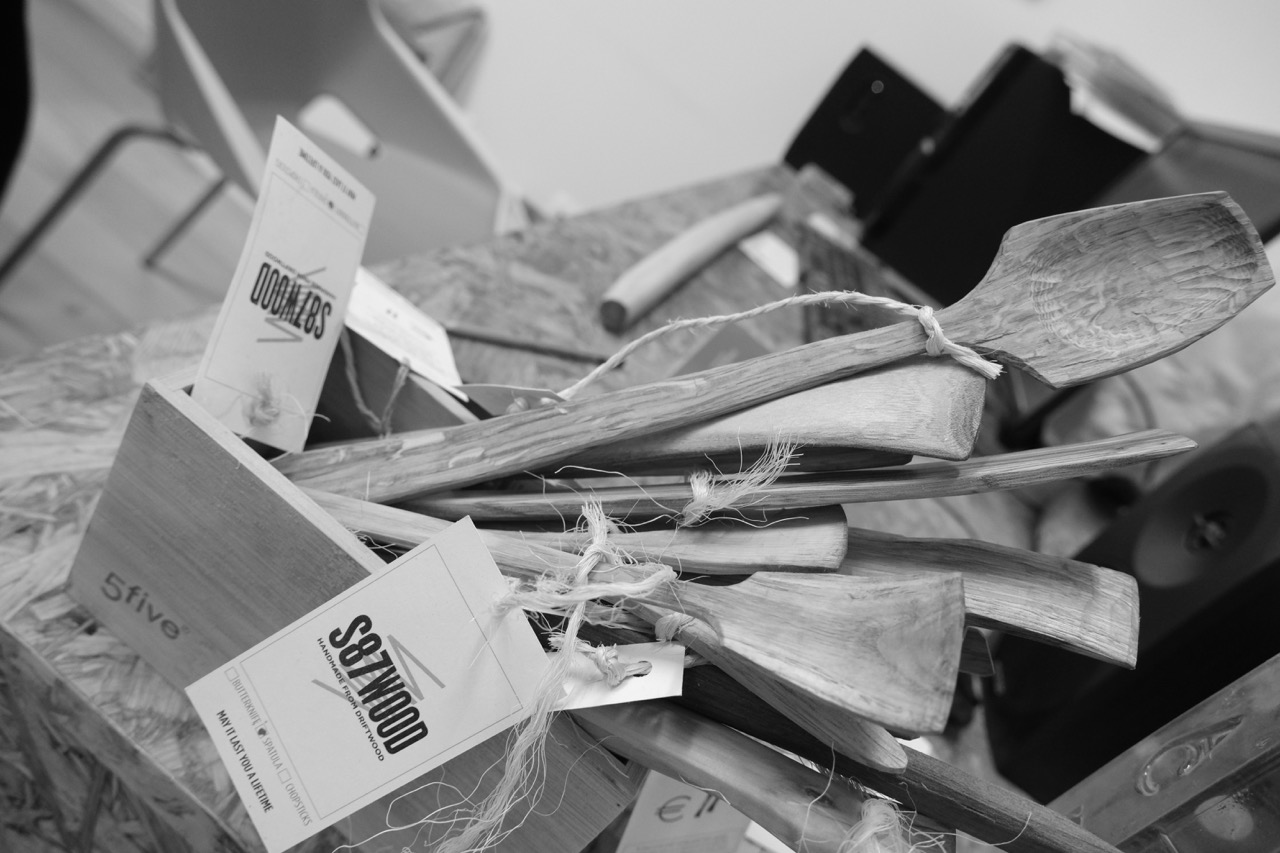
Interviewer: So, you meant to go back?
Zsombi: I always had it in the back of my mind that I was going to leave, not to go back so much as to move on, to either Canada or the US but then life got in the way. I met my wonderful partner, and we are now raising a child together.
Interviewer: Do you feel like it is a good place to raise children here?
Zsombi: He is only two months – so I will tell you in a year! He knows the house better than the outside. But I think so, you have it all, plus you have no minus fifty-degree frosts.
Interviewer: Tell me about your work here on the island.
Zsombi: I’m a graphic designer by training and I came here to work as a graphic designer. The job I came here for was to work at an advertising agency as a designer and I did that for many years. But you know that day when you are walking up the stairs and your stomach turns into a knot and you realise you hate working there? Well, I had that. I realised I was living in one of the most breathtakingly beautiful places on earth but I was spending most of my time looking out the window of an office. So, I said an expletive and then I quit. The money that I saved I spent on a touring bike for long distances, bought a whole bunch of ferry tickets, because there used to be a very good ferry system here that was cancelled over Covid. I took the bike, I took the tent, I visited all nine islands and it was best thing that I’ve done here.
Interviewer: You can’t do that anymore.
Zsombi: No, not even in the summer. There are ferries between the central islands, but you have to get there. But I digress. The point is that I left my office job and took up cycling and had my unemployment benefit for a while. I had the opportunity to think about what I wanted to do. I always liked working with my hands and I am very into the idea of utilitarianism. Even before I left my job I was always working with my penknife and carving. The house where I lived did not have very good utensils. I like cooking, I like carving, so I began to carve my own spatulas for my style of cooking. My friends asked me where they were from and I started to giving them away as gifts. The feedback was good – comfortable, looks nice. I said, OK, I’ll try selling them. I got invited to a hippy style fair, they had places for artisans, I went there and took a few dozen spatulas and a few dozen chopsticks. I sold all my stock and that was the sign I needed to carry on. I applied for the Azores Craftlab project which is an incubator programme from the local crafts council specifically aimed at young craftspeople and now I am here. We get a workshop and grant system which you can apply for. I try applying for all kinds of grants because it is not the most profitable business yet, but I am working on that.
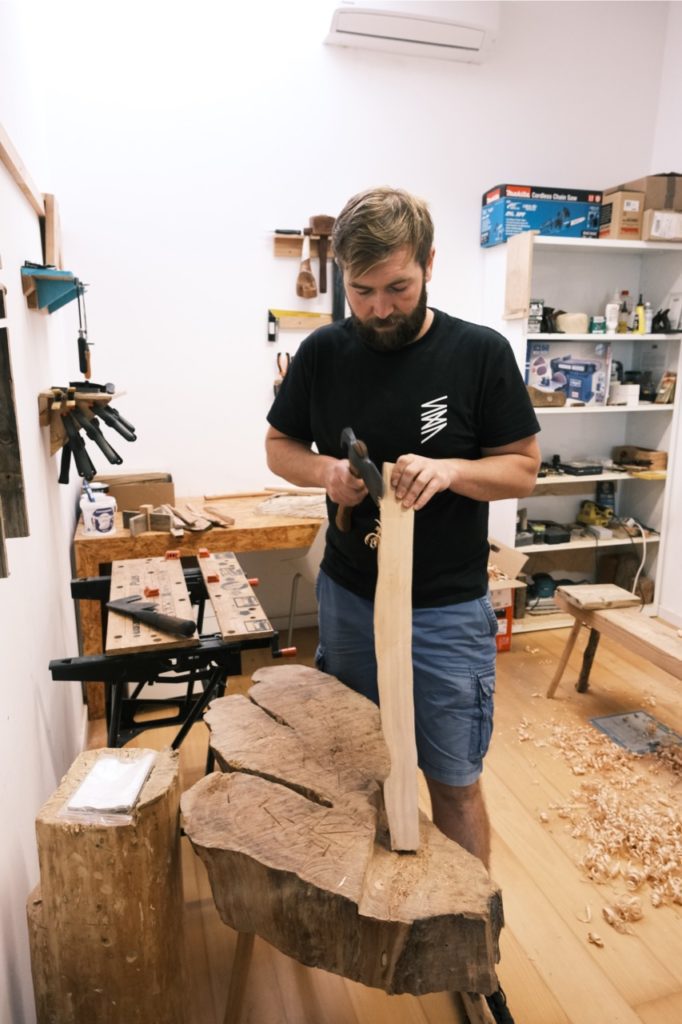
Interviewer: So, you found that the Azores was quite a nurturing place to set up a small craft business?
Zsombi: In the business sense, not yet. To be perfectly frank I would say that I am good at doing what I do, the woodwork, the craft, the products, but I am not a very good salesman, and I am really not good at administration. If I could choose how life works I would like to have a manager! I just like making things, the work itself. It’s a lot of work but it’s mentally relaxing and physically demanding.
Interviewer: I have a lot of sympathy! Please can you tell me about how you came to work with driftwood. To me that is the most interesting part of your story and greatly connects you to the place that you are in.
Zsombi: I always connected to nature, even when I was in my office job. During the summers I would get out of work, change my pants, change my t-shirt and cycle off to Sete Cidades. Then I rolled back down and the next day I did that again. I have been cycling since I got here. Living on an island has this wonderful advantage if you are cycling that it is physically impossible to get lost although it is the most demanding place I have ever cycled because it is all up and all down. But back to driftwood. Coming here from Eastern Transylvania in the mountains where I live, we have pine trees and beech trees and that is basically it. Coming here you have this cacophony of nature. It’s so interesting because even the endemics is such an interesting mix of Iberian Peninsula, North Africa and North American species and that’s just the endemics, the ones that were here already. Then if you go onto the ones that were introduced it’s literally all over the world, every continent except Antarctica. In the 1800s they bought in 100s of species of exotics because they had these wonderful botanical gardens, although the unintended consequences are that the island is now runover by invasives. Back to driftwood! I use driftwood because it is free, and the ocean does the quality control for you. If it washes up on the beach and it is not rotten, grey, completely useless, then usually it’s pretty good. On the outside it is chewed up and gnarly but, on the inside, it is perfectly preserved.
Interviewer: Do you know where all the driftwood comes from? Does it come from the island and go out to sea and back again or from further away?
Zsombi: Both.
Interviewer: What’s the most interesting piece of wood you’ve found?
Zsombi: Probably a piece of leadwood. It definitely came from Africa, from the base of the tree. I have it here still somewhere. It’s as hard as a rock and it spent years if not decades in the ocean.
Interviewer: Wow!
Zsombi: It’s called leadwood because of the weight and because it is completely black. It has no discernible grain unless you are looking at it under a microscope. I found it years ago on the coast and cut it up for cheeseboards and coasters because wood that dense needs years to dry.
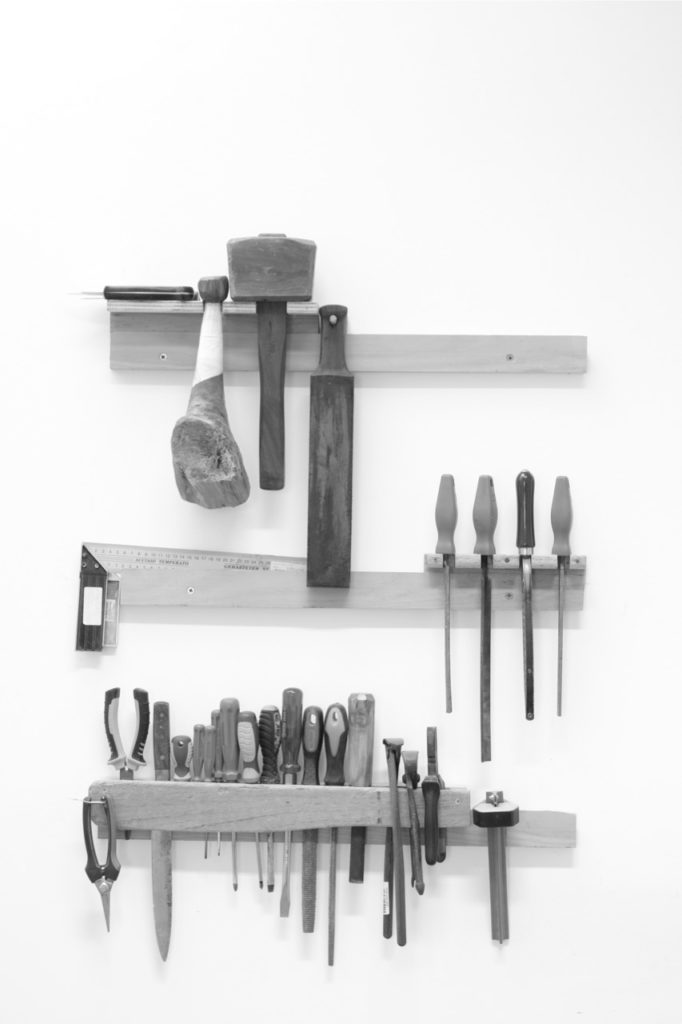
Interviewer: The smell of the wood in here is amazing. How much do the shapes of the driftwood determine what you make?
Zsombi: Yes, of course. Why not use the shape in which it comes? Nature did half of the work for you and wood is strongest in the shape it comes in. I love it.
Interviewer: And your bigger pieces, your furniture, are they also made from driftwood?
Interviewer: How do you know so much about these species of wood?
Zsombi: I’ve been learning ever since I started doing this job. It’s mainly from the fact that I wanted to know the physical characteristics of the wood. How strong is it? Will it rot? Will it break?
Interviewer: How does the wood get seasoned for use when it is in the ocean?
Zsombi: Here’s the thing – the ocean seasons it even better that air as the salt sucks out the moisture from the wood. And the water prevents it from cracking. I pulled another massive piece out from Sete Cidades lake. I was trimming a stone pine tree and found one of the branches was beautiful and gnarly and full of knots and thought it would make a beautiful bench. Stone pine is incredibly fragrant when you work with it.
Interviewer: You must look for wood wherever you go.
Zsombi: Unfortunately, yes. Unfortunately, and fortunately because it means we have a lot of free firewood. I get unique materials to work with. I have buckets specifically for legs – stone pine, black locust, mulberry – mulberry is one of the best woods to work with in the world. I was doing the Gorreana hike and suddenly a big piece of mulberry turned up. After a while you just start to recognise these different woods. I carried it down the hike, which was very heavy, but it was worth it because it is an incredibly good wood.
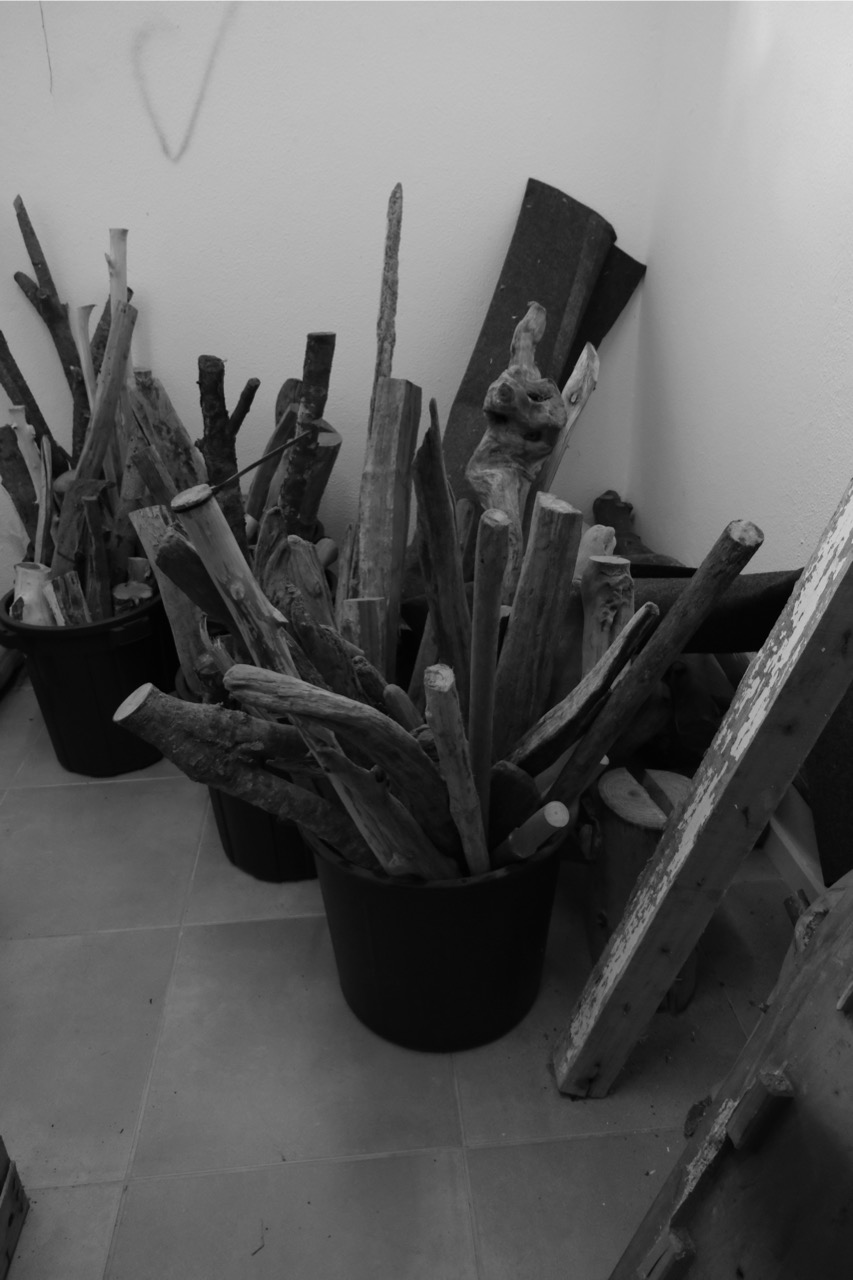
Interviewer: What’s your hope for the future of crafts such as yours in the Azores?
Zsombi: Well, tourism is now here to stay. The genie is out of the box, it’s not going back in. So we should not focus on selling t-shirts with stupid messages on them about the Azores – crudely drawn cows and volcanoes – but focus on the fact that we have centuries old crafts here. Let’s focus on those. In my case I specifically write on my labels and tags that the product is handmade from driftwood in the Azores. I have noticed that people really react to this. Was this made here? Oh nice. Was this made from driftwood? Oh nice, oh my god. Extra Cool. In my specific case it’s valuable, extremely local.
Interviewer: And I also think in terms of other crafts, they are centuries old but still very much alive, because they had to keep going for longer than in more developed parts of the world.
Zsombi: The more isolated a place, the more they must make their own things and preserve this kind of knowledge. It is this knowledge that can save your behind.
Interviewer: Hum. Yes. I think it’s good to end on a behind. Thanks, Zsombi. It was fascinating and your work is beautiful.
